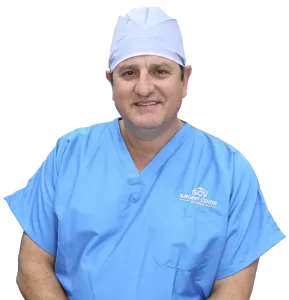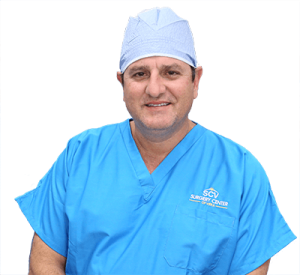
Osteophytes, also known as bone spurs, are smooth bony growths that typically appear near joints. Patients who have arthritis or joint injury typically develop them over time. It’s not uncommon for bone spurs to appear on the feet, hands, knees, and spine. A healthy lifestyle can help delay the onset of symptoms such as pain, stiffness, and decreased range of motion. In addition, medication, physical therapy, and surgery may all be helpful.
If you or a loved one is experiencing any of the symptoms associated with bone spurs outlined in this article, it’s time to get a FREE Consultation and MRI Review with Deuk Spine Institute. We will help relieve your pain and get you back to living without limitations!
A bone spur is a smooth bony bump that develops off a bone — an osteophyte. Bone spurs occur near joints and form over time (where two or more bones meet).
Bone spurs are most frequent in adults at least 60 years old; younger people are not immune to developing them. In addition, people who suffer from osteoarthritis (OA) have a significantly increased risk of developing bone spurs.
The degeneration of cartilage, which acts as a cushion between your bones, is one of the most common causes of osteoarthritis (OA), sometimes known as “wear and tear” arthritis.
Spurs on the foot, most commonly on the heel (also known as calcaneal spurs), the big toe, and the ankle. Even though they can develop from any bone, osteophytes most often develop in the following bones:
The most common cause of bone spurs is osteoarthritis (OA), which causes damage to the joints. The degeneration of cartilage, the muscular, flexible tissue that cushions bones and allows joints to move more readily, is the underlying cause of osteoarthritis (OA). OA can develop with age or as a result of damage (like a sports injury). The formation of new bone tissue occurs concurrently with the body’s attempts to repair damaged cartilage. Osteophytes are the medical term for these new bony growths.
Bone spurs are another possible complication of ankylosing spondylitis. In addition, spinal inflammation is the result of this uncommon kind of arthritis. Ankylosing spondylitis is a condition that, over time, causes the spine’s smaller bones to fuse or connect (vertebrae). The body reacts by developing spinal osteophytes as a protective measure.
Some individuals are completely unaware that they have bone spurs. When spurs put pressure on adjacent nerves, they can cause various uncomfortable symptoms. Try to restrict movement as much as possible to avoid contact with other bones or tissues. If it occurs, you can experience some of the following:
A bone spur may be discovered inadvertently through an X-ray or other examination for a particular ailment, even if the patient has no symptoms. Go to your healthcare practitioner and tell them that you are experiencing pain, stiffness, and loss of motion. They will ask you to detail your symptoms and inquire about your medical history as well as the medical history of your family.
They will likely conduct a complete and thorough physical examination and perform some range of motion and strength tests on your joints. In addition, imaging tests, such as X-rays, CT scans, and MRIs, should be ordered to check for arthritis and spurs and identify damaged ligaments or tendons.
If bone spurs are present, but no symptoms are present, therapy is not required. However, if you have joint discomfort, stiffness, limited motion, or numbness, you should contact your healthcare professional immediately.
The following at-home treatments and modifications in lifestyle can help reduce the symptoms of osteophytes:
If these approaches are insufficient, your healthcare professional may prescribe medication.
Pain relief increased range of motion, and a strengthening of the muscles around joints are all potential benefits of exercise and stretching.
If over-the-counter pain medications cannot alleviate your symptoms, your healthcare professional may recommend a more potent alternative or a cortisone shot.
If, after one year of treatment, the symptoms do not improve, surgery to remove the bone spurs may be necessary.
There is no failsafe method for avoiding the development of bone spurs. However, if you live a healthy lifestyle, you can lower your risk of acquiring one of these conditions by adhering to the following:
The only method to get rid of bone spurs permanently is to have surgery to remove them.
Even though bone spurs don’t often regrow following surgery, you still risk developing new ones in other parts of your body.
Rest, ice, and over-the-counter pain relievers can help alleviate the discomfort caused by bone spurs, which can also cause stiffness. Joint tension reduces by losing weight and wearing shoes that are the correct size for your feet. You should contact your healthcare professional if your symptoms become severe and not bearable.
Even if you have bone spurs, you should still endeavor to have an active and healthy life. Try to stay away from things like motions and activities that are painful. For example, choose activities that are easier on your body than running, such as walking. When you exercise, you should always take precautions to protect your joints. Always remember to warm up and stretch before working out, focus on developing correct methods, and use appropriate footwear.
Bone spurs might not cause any symptoms at all, or they might significantly impact the quality of your daily life. Symptoms can be delayed or alleviated by using home remedies and changing your lifestyle. If you cannot get your pain or any other symptoms under control on your own, speak with your healthcare professional about additional treatment options.
If you or someone you love is experiencing any of the preceding symptoms outlined in this article, it’s time to get a FREE Consultation and MRI Review with the Deuk Spine Institute. We can help relieve your pain and get you back to living without limitations!

